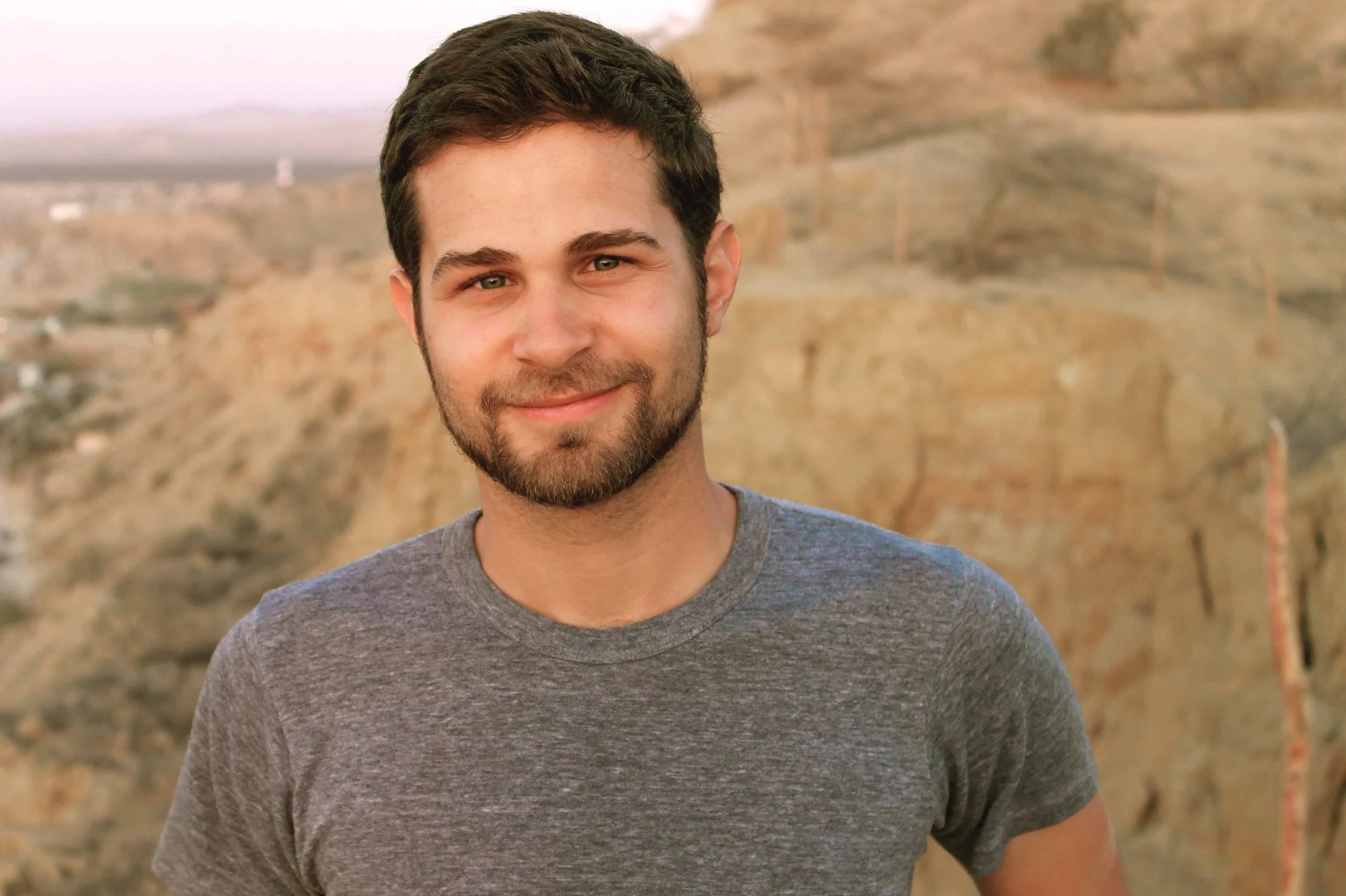Science of the Sacred
Andrés Ruzo taking samples under the Milky Way. (Photo courtesy Ruzo by Devlin Gandy.)
Andrés Ruzo was six years old when he discovered the Earth was alive. Raised between Peru, Nicaragua and the United States, Ruzo was a man of the world before he was even a boy. In the Peruvian Andes, he felt the chill of the snow-capped mountains — grand, unmoving, ancient. Soon after, on his family’s coffee farm along the flanks of Nicaragua’s Casita volcano, he felt heat rising from the ground — restless, alive, uncontained.
Among the fumarole fields, he and his cousins roamed wild, treating the land like a playground: throwing hot mud, poking sticks into the bubbling pools to see how long it took before they burned, even cooking eggs on the steaming ground. “It was like my childhood friend,” he speaks of the volcano. Some might’ve seen it as juvenile mischief. For Ruzo, it was the first spark in a lifelong devotion to Mother Earth.
Decades later, he found himself in front of another volcano; this time, thousands of miles away on Hawai‘i Island. As part of his geology studies, Ruzo interned at the University of Hawai‘i
at Hilo’s Center for the Study of Active Volcanoes. It was meant to be a brief summer program, but, like much of Hawai‘i, it left a lasting impression.
“I mean, how many places on Earth can you check off the boxes of conservation, indigenous rights and volcanoes?” says Ruzo, who returns to the Islands time and time again. “I think Hawai‘i is uniquely poised ... It’s impossible to not highlight Hawai‘i as sort of a mecca — a node for novel thought and learning for all these spaces.”
Geologist Andrés Ruzo became the first scientist to receive a shamanic blessing by Peru’s indigenous community to study the Shanaytimpishka, or Boiling River. (This portrait and photo below by Sofia Ruzo.)
Like a moth to a flame, though, Ruzo was drawn back to one of his home countries: Peru. There, deep into the Amazon, he made international headlines for his work on the Shanay-timpishka, or Boiling River, a place long believed to be a myth. Ruzo first heard of it in a story as a child and grew determined, years later, to prove it existed. What he encountered was not only a geologic anomaly — a river hot enough to cook animals whole — but a sacred site, known and revered by the surrounding Indigenous community for generations.
In 2011, he became the first scientist granted the shamanic blessing to study the river.
“The shaman said, ‘Andrés, help us bring this place to the world responsibly,’ and that’s something I took very seriously. In the words of the shaman, ‘We can no longer conceal to protect’ — meaning the jungle is disappearing far too quickly. There’s nothing we can do at this point to hide, and if you hide, you will basically die in silence.”
Ruzo shares that in Peru alone, we are losing half a soccer field every minute to deforestation. “And we have been losing that for most my life,” he says. “If you expand that out to the Amazon as a whole, we are losing two — uno, dos — soccer fields every minute.
“Minute,” he emphasizes.
So, what does one man do? He talks about it — on National Geographic, in a TED Talk, on social media, in a book, in interviews. He builds communities and gets others just as passionate about the Amazon as he is, so they’ll want to protect it, too.
He also founded the Boiling River Project, a nonprofit dedicated to the research, protection and preservation of this sacred site and its surrounding regions. Through partnerships, education and conservation, the project aims to protect not just the land, but the stories, people and wisdom it holds. Supporters can learn more or donate at boilingriver.org.
“If the Boiling River Project has taught me anything,” Ruzo says, “it is rewiring my definition of the word sacred. In the past, I would’ve said that’s a church, cathedral, mosque, temple, synagogue. But with time, working at the Boiling River and interacting with a lot of ancient keepers of that word, it opened my eyes to another definition.
“I would argue that the most ancient definition of the word sacred is ‘that which gives life.’ It’s the clean air you need to breathe, the clean water you need to drink, the nutritious food you need to stay healthy, the connection to your landscape — I think that’s sacredness.
“Now that humans basically have the power to do whatever we want, how do we rediscover the sacred?” he poses.
For those feeling inspired about Ruzo’s mission, he offers an invitation: Come and visit the Amazon.
“I want them to fall in love with what I consider the greatest celebration of life on planet Earth,” he says. “If you fall in love with something, you will fight for it.”
(Bridge crossing photo by Devlin Gandy.)




